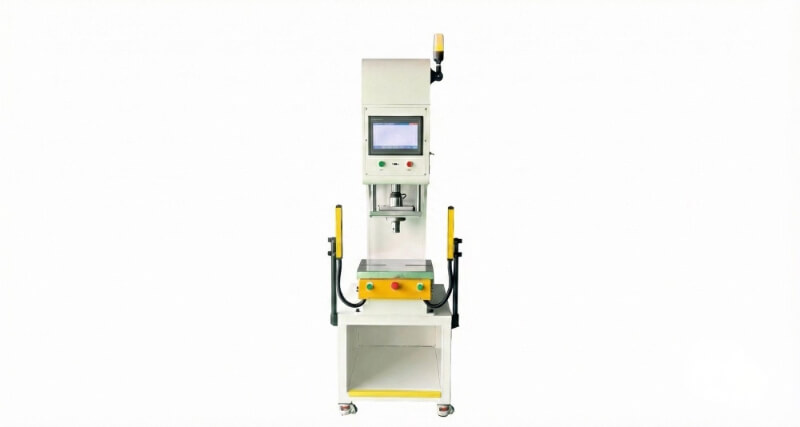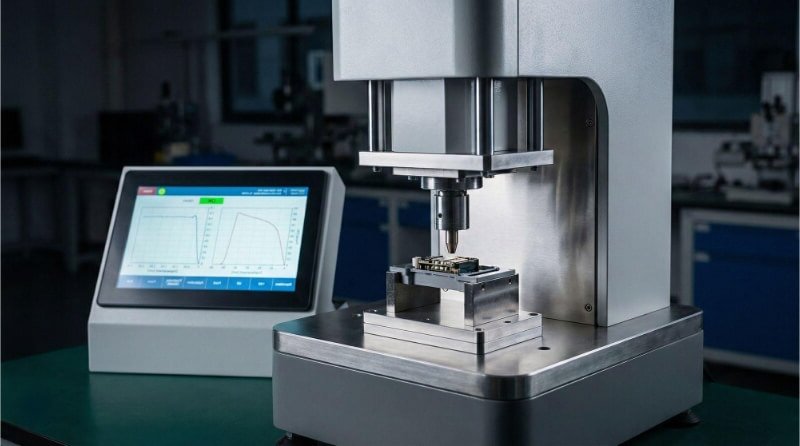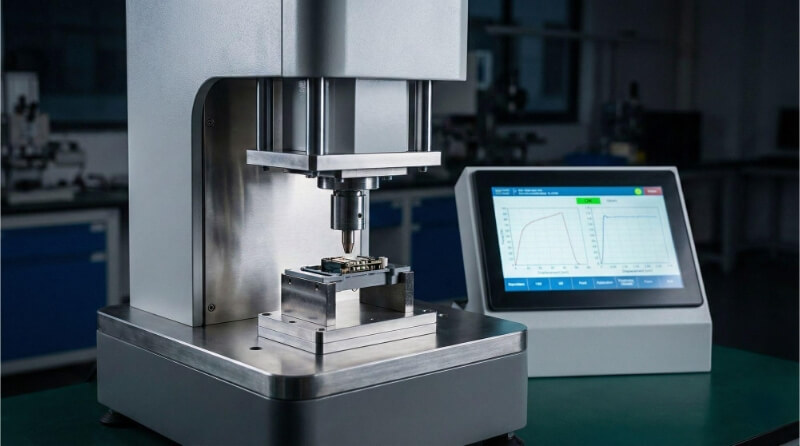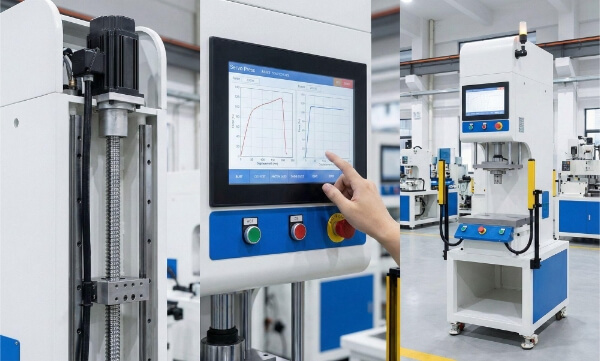Veel mensen willen weten of messing magnetisch is. Deze vraag komt vaak naar voren bij het selecteren van materialen voor elektrische, mechanische of ontwerpprojecten. Als je messing gebruikt in een onderdeel dat blootgesteld kan worden aan een magnetisch veld, zal het antwoord je beslissing beïnvloeden. De vraag is dus: trekt messing magneten aan? Laten we eens kijken wat er gebeurt met messing in een magnetisch veld.
Messing wordt in veel industrieën gebruikt vanwege zijn sterkte, corrosiebestendigheid en lage magnetische permeabiliteit. Laten we de wetenschap onder de loep nemen en voorbeelden uit de praktijk bekijken om u te helpen beslissen of messing geschikt is voor uw behoeften.
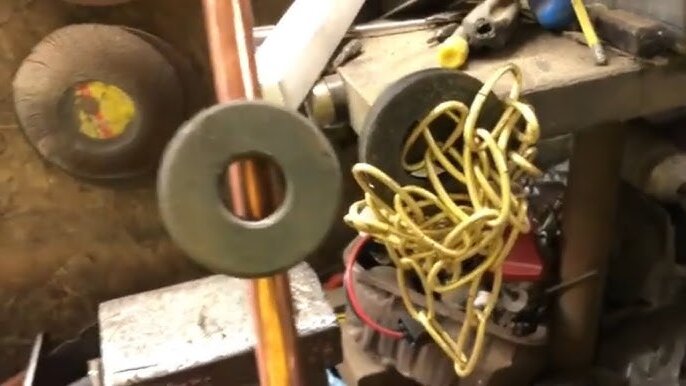
Wat maakt een materiaal magnetisch?
Een materiaal is magnetisch als de atomen elektronen hebben die in dezelfde richting draaien. Deze draaiende elektronen creëren een klein magnetisch veld. Als veel van deze elektronen op één lijn liggen, kan het materiaal een magneet aantrekken of door een magneet worden aangetrokken. Dit gedrag hangt af van hoe de atomen zijn gerangschikt en hoe dicht hun elektronen bij elkaar staan.
Als de elektronspins willekeurig zijn of elkaar opheffen, zal het materiaal geen sterke magnetische eigenschappen vertonen. Daarom kunnen metalen die op elkaar lijken heel verschillend reageren in de buurt van een magneet.
Soorten magnetische materialen
Materialen vallen in drie categorieën uiteen op basis van hun magnetische respons. Het verschil zit in hoe hun atomen reageren op magnetische velden.
Ferromagnetisch
Ferromagnetische materialen oefenen een sterke aantrekkingskracht uit op magneten. Ze kunnen zelf ook magneten worden. IJzer, nikkel en kobalt zijn veelvoorkomende voorbeelden. Deze metalen hebben een kristalstructuur die de uitlijning van hun elektronspins in stand houdt. Door deze sterke interne uitlijning hechten ze zich gemakkelijk aan magneten.
Paramagnetisch
Paramagnetische materialen hebben ongepaarde elektronen, maar hun atomen blijven niet uitgelijnd. Deze materialen worden zwak aangetrokken door magneten. Aluminium en platina vallen in deze groep. De aantrekkingskracht is zo gering dat de meeste mensen het niet merken, tenzij er sterke magnetische velden worden gebruikt.
Diamagnetisch
Diamagnetische materialen stoten magnetische velden lichtjes af. Hun elektronenparen heffen elk magnetisch effect op. Koper, zilver en zink zijn diamagnetisch. Wanneer deze metalen in een magnetisch veld worden geplaatst, geven ze een zwakke duw in de tegenovergestelde richting.
Messing en de samenstelling
Nu we de basisprincipes van magnetisme hebben behandeld, laten we eens kijken waar messing van gemaakt is. De samenstelling ervan speelt een belangrijke rol in hoe het zich gedraagt rond magneten.
De rol van koper en zink in messing
Messing is een legering. Het wordt gemaakt door koper en zink te mengen. Koper is een zacht, roodachtig metaal dat niet reageert op magneten. Zink is een grijsachtig metaal dat ook geen magnetische aantrekkingskracht heeft. Wanneer deze twee metalen worden gecombineerd, is het resultaat een niet-magnetisch materiaal.
De verhouding tussen koper en zink kan veranderen afhankelijk van het type messing. Maar in alle standaardvormen oefent geen van beide metalen een sterke aantrekkingskracht uit op magneten. Messing blijft dus in de meeste gevallen niet-magnetisch.
Hoe beïnvloedt legeren het magnetische gedrag?
Legeren verwijst naar het proces van het mengen van twee of meer metalen om hun sterkte, kleur of corrosiebestendigheid te verbeteren. Maar dit heeft ook invloed op het magnetische gedrag. Wanneer metalen zoals ijzer, nikkel of mangaan in kleine hoeveelheden worden toegevoegd aan messing, kunnen ze de reactie van de legering in de buurt van een magneet veranderen.
Als een messing onderdeel bijvoorbeeld een spoor van ijzer bevat door het fabricageproces, kan het een zwakke magnetische respons vertonen. Maar dit komt zelden voor bij goed gemaakt messing. Het meeste commerciële messing heeft een zuivere samenstelling en blijft niet-magnetisch.
Varianten van messing en hun eigenschappen
Er zijn veel soorten messing. Sommige zijn zacht en gemakkelijk te vormen. Andere zijn taai en worden gebruikt in machines. Deze verschillen ontstaan door de combinatie van koper en zink en eventuele extra elementen.
Hier zijn een paar veelvoorkomende soorten:
- Geel messing: Hoog kopergehalte, gebruikt in sanitair en decoratieve onderdelen.
- Rood messing: Bevat meer koper, wat resulteert in een diepere kleur en verbeterde corrosiebestendigheid.
- Marine Messing: Bevat een kleine hoeveelheid tin, waardoor het sterker is voor gebruik op zee.
Ondanks hun verschillen vertonen deze varianten nog steeds weinig tot geen magnetisch gedrag. Hun basiselementen blijven hetzelfde: koper en zink, waardoor ze in de niet-magnetische categorie blijven.
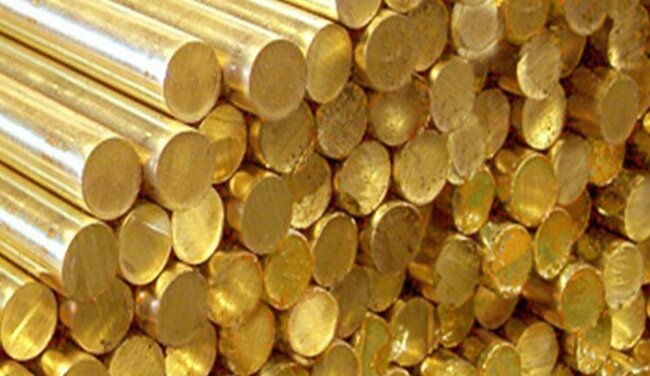
Is messing magnetisch?
Nu we weten waar messing van gemaakt is, gaan we de grote vraag beantwoorden. Hoe gedraagt messing zich in de buurt van een magneet?
Magnetische respons van zuiver messing
Zuiver messing oefent geen aantrekkingskracht uit op magneten. Dit komt omdat de hoofdbestanddelen - koper en zink - beide niet magnetisch zijn. In combinatie creëren deze metalen geen sterk magnetisch veld.
Je kunt een sterke magneet naast een schoon stuk messing houden en het zal niet bewegen. Dit geldt voor de meeste soorten messing die worden gebruikt in gereedschap, fittingen en elektronica. Tenzij er iets anders aan de legering is toegevoegd, blijft het materiaal niet-magnetisch.
Veelvoorkomende misvattingen over messingmagnetisme
Sommige mensen denken dat messing magnetisch is omdat ze zien dat het een magneet aantrekt. Maar in de meeste gevallen trekt het stuk messing geen magneet aan:
- Heeft ijzer of staal erin gemengd
- Het is gecoat over een ander magnetisch metaal
- Was blootgesteld aan metaalschilfers of vuil dat aan magneten blijft kleven
Deze kleine veranderingen kunnen mensen misleiden. Het is dus gemakkelijk om te denken dat messing magnetisch is terwijl dat niet zo is.
Hoe test je of messing magnetisch is?
De beste manier om dit te controleren is met een sterke magneet en een schoon koperen monster. Houd de magneet dichtbij. Als het messing niet beweegt, is het niet magnetisch. Als het wel reageert, inspecteer dan het onderdeel. Zoek naar:
- IJzeren schroeven of inzetstukken
- Plateren over een ander metaal
- Roest of opbouw vastgeplakt aan het oppervlak
Met een vijl kun je door het oppervlak krassen om te testen wat eronder zit. Als het binnenste metaal geel of roodachtig is en nog steeds niet reageert op de magneet, is het waarschijnlijk echt messing.
Factoren die magnetisch gedrag in messing beïnvloeden
Messing is meestal niet magnetisch. Onder bepaalde omstandigheden kan het echter kleine veranderingen vertonen in zijn reactie op een magneet. Laten we eens kijken wat hiervan de oorzaak kan zijn.
Aanwezigheid van onzuiverheden of andere metalen
Als messing sporen van magnetische metalen bevat, zoals ijzer of nikkel, kan het een ander gedrag vertonen. Deze onzuiverheden kunnen in de legering terechtkomen tijdens recycling of door het gebruik van grondstoffen van slechte kwaliteit. Zelfs een kleine hoeveelheid ijzer kan zwakke magnetische plekken veroorzaken.
Dit betekent niet dat het hele onderdeel magnetisch is. Maar de magneet kan blijven plakken op plaatsen waar de onzuiverheid aanwezig is. Hoogzuiver messing, vooral in precisieonderdelen, voorkomt dit probleem.
Koud werken en mechanische spanning
Koud bewerken verwijst naar het vervormen van messing zonder het gebruik van hitte door middel van processen zoals buigen, rollendof stempelen. Hierdoor verandert de interne structuur van het metaal. In sommige gevallen kan het een lichte magnetische reactie veroorzaken.
De stress van koude bewerking kan leiden tot spinafstemming van elektronen in kleine gebieden. Hierdoor vertoont het messing een zwak magnetisme, hoewel dit meestal te klein is om de prestaties te beïnvloeden.
Warmtebehandeling en gloeien
Warmtebehandeling wordt gebruikt om messing zachter te maken of de structuur ervan te veranderen. Gloeienhelpt in het bijzonder bij het herstellen van de oorspronkelijke staat van het metaal na een koude bewerking.
Als messing na het bewerken licht magnetisch wordt, kan het magnetisme worden verwijderd door het te verhitten. Dit werkt doordat atomen terugkeren naar een ontspannen toestand, waardoor een tijdelijke magnetische afstemming wordt verbroken.
Toepassingen waarbij magnetisme van belang is
In bepaalde industrieën is het cruciaal om te bepalen of een materiaal reageert op magnetische velden. Het magnetische gedrag van messing kan van invloed zijn op hoe en waar het wordt gebruikt.
Elektronica en sensoren
Messing wordt vaak gebruikt in connectoren, terminals en schakelaaronderdelen. De niet-magnetische aard komt in deze gevallen goed van pas. Het voorkomt interferentie met gevoelige magnetische velden of signalen.
In apparaten zoals kompassen, sensoren of magnetische spoelen kunnen magnetische metalen vervorming veroorzaken. Messing voorkomt dit probleem en heeft daarom de voorkeur in veel ontwerpen met een lage interferentie.
Sanitair en fittingen
Veel kleppen, leidingen en armaturen zijn gemaakt van messing. Hier helpt het niet-magnetisch zijn bij het werken in de buurt van elektrische systemen. Het voorkomt ook metaalafzetting in boilers die magneten gebruiken om kalkaanslag te verminderen.
Magnetische onderdelen in leidingen kunnen roest of andere metalen uit het water verzamelen. Messing doet dit niet. Dat is een van de redenen waarom messing langer meegaat en schoner blijft in watersystemen.
Decoratief en architecturaal gebruik
Messing is een standaardmateriaal dat wordt gebruikt in deurknoppen, leuningen en sierlijsten. De gouden kleur en niet-magnetische kwaliteit maken het ideaal voor esthetische doeleinden. Het plakt niet aan magneten, wat handig is op plaatsen waar magneten in de buurt kunnen worden gebruikt, bijvoorbeeld in magnetische deurgrendels of beveiligingssystemen.
Dit voorkomt dat het koperen voorwerp na verloop van tijd gaat trekken of verschuiven. Het beschermt ook apparaten in de buurt die afhankelijk zijn van stabiele magnetische velden.
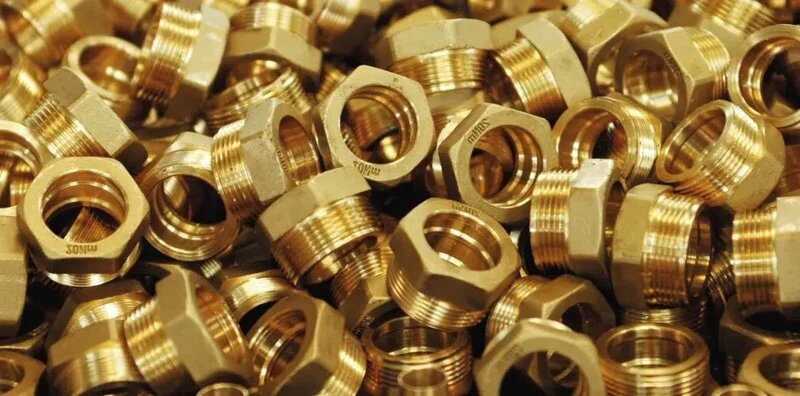
Magnetische testmethoden
Om te bepalen of een stuk messing magnetisch is, zijn er eenvoudige methoden om het te testen. Je hebt niet altijd speciaal gereedschap nodig.
Eenvoudige magneettests thuis
Je kunt beginnen met een neodymium basismagneet. Deze zijn klein maar sterk. Houd de magneet dicht bij het messing deel. Als er geen beweging of trekkracht is, is het messing niet magnetisch.
Zorg ervoor dat het messing schoon is. Veeg stof of roest weg. Test verschillende plekken op het onderdeel. Als één plek wel trekt maar andere niet, kan er een stalen inzetstuk of onzuiverheid in zitten.
Als je niet zeker weet of het voorwerp van massief messing is, probeer dan op een verborgen plek te krassen. Gebruik een vijl om het metaal onder het oppervlak bloot te leggen. Als de kleur goud- of roodachtig blijft en er geen magneet wordt aangetrokken, is het waarschijnlijk messing.
Geavanceerde magnetische permeabiliteitstesten
In industriële omgevingen worden nauwkeurigere instrumenten gebruikt. Een magnetische permeabiliteitsmeter meet de mate waarin een materiaal reageert op een magnetisch veld.
Deze test toont kleine magnetische effecten die je hand of een huismagneet niet kunnen detecteren. Dit is nuttig bij het werken met kritieke onderdelen, zoals onderdelen voor de ruimtevaart, sensorbehuizingen of medische instrumenten.
Messing vertoont doorgaans een zeer lage permeabiliteit. Als de waarden hoger zijn, kan het magnetische metalen bevatten of moet het verder worden geïnspecteerd.
Conclusie
Messing is onder normale omstandigheden niet magnetisch. Het is voornamelijk gemaakt van koper en zink, twee metalen die niet reageren op magneten. Tenzij messing magnetische onzuiverheden bevat of onder mechanische spanning staat, zal het geen magneet aantrekken. Dit maakt messing een goede keuze voor toepassingen waar niet-magnetische materialen nodig zijn, zoals in elektronica, sanitair of decoratieve onderdelen.
Heb je messing onderdelen op maat nodig of hulp bij het kiezen van het juiste materiaal voor je volgende project? Neem vandaag nog contact met ons opOns team staat klaar om uw ontwerp- en productiebehoeften te ondersteunen.
Hey, ik ben Kevin Lee

De afgelopen 10 jaar heb ik me verdiept in verschillende vormen van plaatbewerking en ik deel hier de coole inzichten die ik heb opgedaan in verschillende werkplaatsen.
Neem contact op

Kevin Lee
Ik heb meer dan tien jaar professionele ervaring in plaatbewerking, gespecialiseerd in lasersnijden, buigen, lassen en oppervlaktebehandelingstechnieken. Als technisch directeur bij Shengen zet ik me in om complexe productie-uitdagingen op te lossen en innovatie en kwaliteit in elk project te stimuleren.

